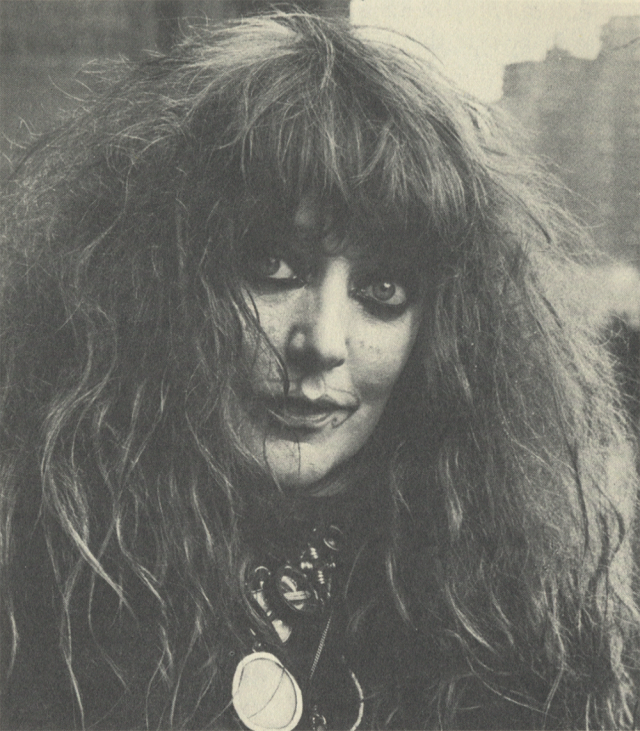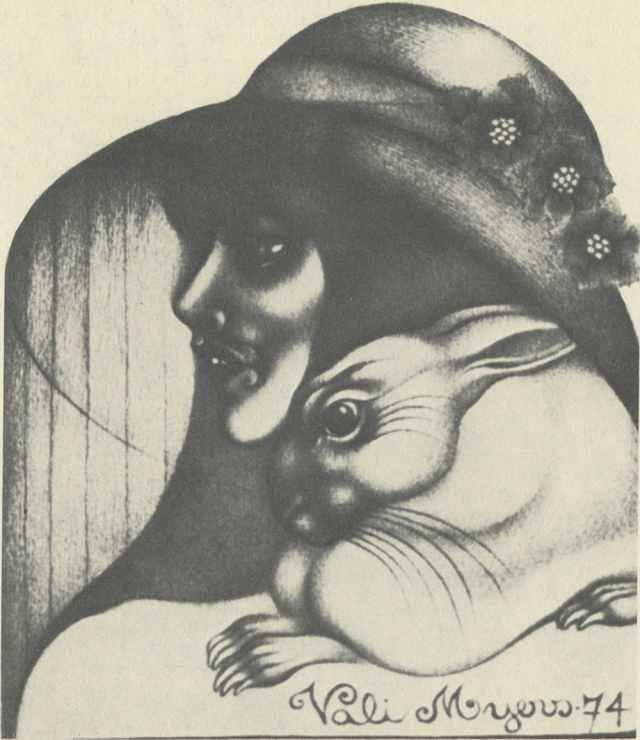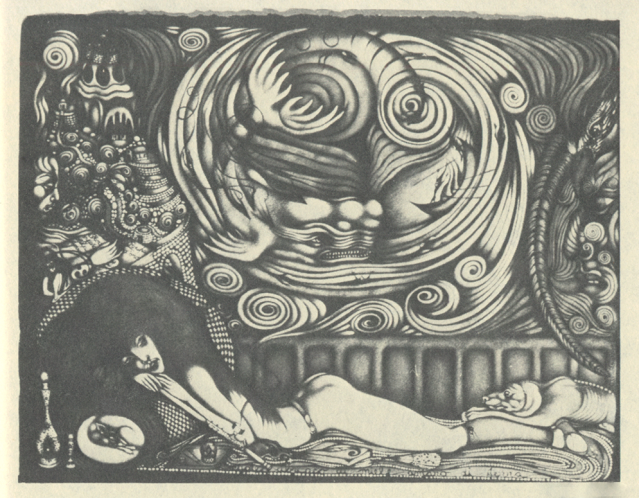
Vali Myers, the artist whose diary pages, drawings and paintings follow, does her work shut in a cage which has been set inside her little home in the hills behind the Italian resort town of Positano. The cage is large enough for Vali to live in along with a live fox. She is not a prisoner. The cage is to her what a burrow would be to an animal, an iron lacework protection against the outside. She speaks of it as a ribcage protecting the heart.
This is the second time Vali’s work has appeared in The Paris Review. A portfolio of her drawings appeared in #18. Very few of Vali Myers’ acquaintances in her early days in Paris, in the late fifties, thought she would survive those times. She had arrived penniless from Australia. She wandered the streets, and sometimes slept in the corners of the Montparnasse cafés. Though she danced in the small boîtes along the rue Dragon, it was for her own pleasure, and for those startled and lucky enough to see her move her body—faded jeans and a man’s shirt tucked in at the waist—in the small floor space cleared for her. She loved to dance with the Senegalese soldiers at the Rose Rouge and in the street afterwards they got into fist-fights over her. She had no means of support; she carried all her belongings—including an odd piece of fox fur with two button eyes at one end which was a talisman she called “Feeley”—in a wire cage shaped like a bird-cage … along with her eye makeup and face powder, a volume of poetry by Thomas Chatterton, the young Irish poet whose act of suicide (at seventeen) Vali often talked of emulating. She wanted to take arsenic (as he did) lying on a bed, and she saw herself collapsing in the same romantic pose painted of the dead poet by the pre-Raphaelite Henry Wallis—an arm dangling, eyes peacefully closed in a gentle face framed by orange hair (the same shade as hers).
It may have been the drawings, and later the painting, which provided a reason not to, In Paris, Vali had some art materials among her belongings. She worked on the drawings at the café tables … touching a fine-nibbed pen to little napkin-sized pieces of paper. She invariably drew representations of herself … usually lying on a bed, sleeping perhaps, with owls perched on the headstands and goodluck stars sketched with a miniaturist’s skill on the girl’s bare feet. Vali refused to sell these drawings; they were props as important to her as the red piece of fur she called Feeley.
In the sixties, aware that the French authorities suspected her of being involved in a smuggling ring, Vali left France and settled in Italy with her husband, Rudi. They live in a small brightly painted home with dozens of pets—ducks, chickens, goats, a fox named Foxy (the real-life manifestation of Feeley) and especially dogs, which have numbered over thirty.
She buries the dogs when they die and then digs up their bones years later.
“The bones are clean and beautiful—Nature’s beautiful like that.”
“How many bones do you have?”
“Piles. The little house, all red and gold, and inside are all those lovely bones.”
She has the names of the favorites of her deceased dogs tattooed on her feet (“I dedicate my feet to my dogs”). Her left hand “belongs” (as she puts it) to Foxy, to whatever important events in his life can be commemorated with a tattoo, and her right hand belongs to Bishli, her red goat who died, and whose white skull sits in the cage inside the house.
A recent resident in the little commune is a young man, Giani, scarcely more than a boy, who arrived one day from an Etruscan village of ancient ruins. Vali says of him, “He is very pure.” The two do erotic dances in the yard among the roosters. He shows her two copulating frogs. He has a small tattoo on his forehead—it represents the marks of a fox’s paw—and another, a very thin one, which defines the cleft of his lower lip. Vali says he has two very beautiful designs on his wrists to commemorate his dog, Flora.
Sometimes Vali and Giani lie on the bed and discuss suicide. There is a Beretta in the house.
“Giani lies next to me and we talk about taking a powder—using the Beretta. He said to me, ‘Oh, but it's all rusted up, that thing’.”
‘ “Oh, we cleaned it up’, I told him, ‘Oh yes, love, you bet’.”
But life is better. The Italian authorities, after years of badgering, have begun to accept the presence of this strange girl in their hills. She works long hours in her cage. Her recent paintings have become more complex; the symbols have increased; the artifacts of her life (her diaries, pottery, quills, skulls, whales, the fox, an opium set) are tucked away in every cranny of the painting surface. Her work has begun to attract attention in Europe—a show in Amsterdam, the commissioning of posters, an interest shown by collectors. A show is planned in the U.S. On occasion Vali comes to New York—an apparition in the lobby of the Chelsea Hotel where she stays.
If she was an astonishing sight in Paris in her early twenties—with the black circles of kohl around her eyes, her face corpse-white, the great crop of orange hair—she presents an equally eye-catching appearance today … long, flowing gypsy robes, her neck hung heavy with necklaces, amulets, and beads … and now she has embellished her face with the delicate tracery of tattoos—a lyre-shaped design around the mouth, and stars on her cheek bones.
She does not stay in New York long. She is soon gone—back to her hills and the ruckus of the dog packs, and the cage where her fox waits. He sleeps in the bed next to her at night. “He buries his chicken bones in my hair.”
— G.A.P.
 Lady and Hare
Lady and Hare
 Moby Dick
Moby Dick




